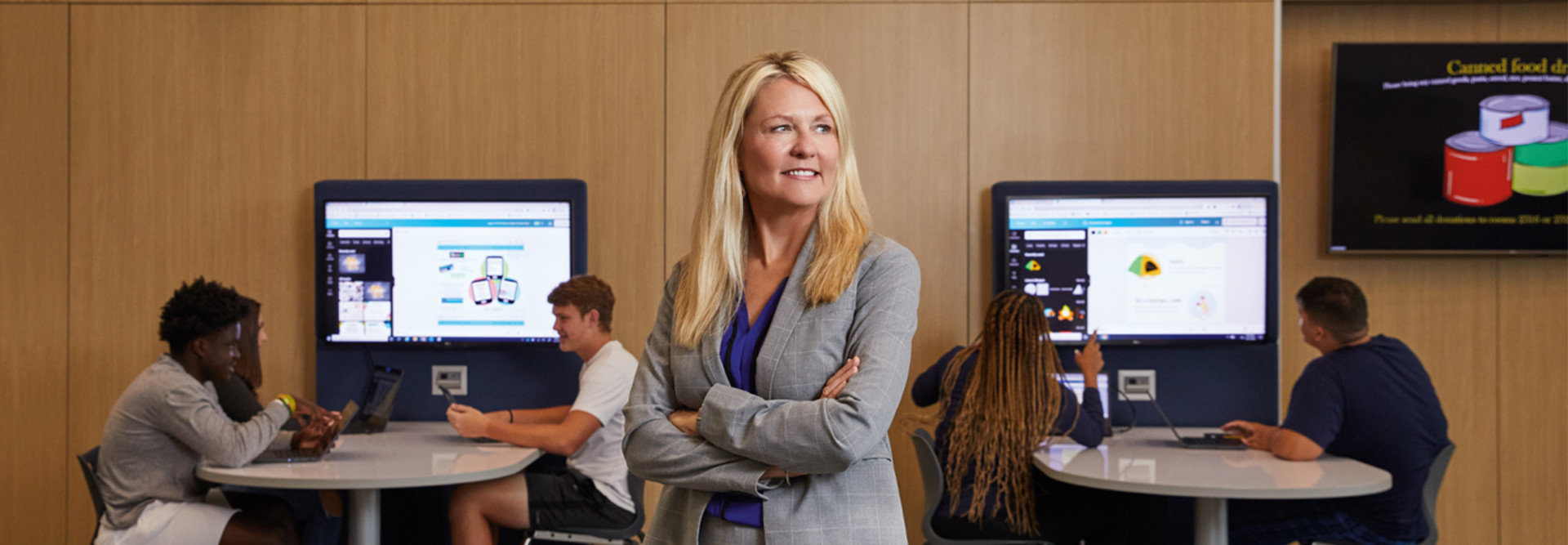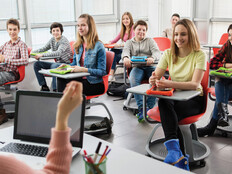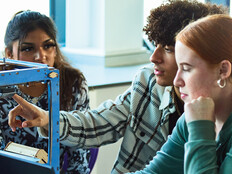Librarians Partner with Teachers to Support Student Success
Kari Heitman was previously the librarian at Katy ISD’s Paetow High School, which opened five years ago. Paetow’s library offers students standard devices such as Chromebooks and desktop computers, and newer technologies such as 3D printers and other makerspace gear to spur creativity and critical thinking.
Now, as the district’s library systems coordinator, Heitman spends most of her time co-teaching. She also curates digital resources, helps teachers scaffold research lessons across grade levels and creates video tutorials that teachers can use with their students.
“That’s one of the hallmarks of the library role today: We are co-teachers, co-partners, collaborators with teachers to help students be more successful,” Heitman says.
The district has standardized library technologies to ensure that all schools have the same resources, including Chromebooks, tablets and makerspace tools. Every five years, each site gets a technology refresh.
DISCOVER: How digital resource libraries continue to engage in-person students.
In the newest spaces, the emphasis is on flexibility, says Rankin. Bookshelves are on wheels, and movable kiosks where students can look up resources have replaced permanent stations.
“Rather than built-in cabinetry with desktop computers and built-in wiring, we want students to have mobile devices in hand,” Rankin says. They can work at tables, on sofas or outside, where extended Wi-Fi ensures coverage.
Katy ISD has 72 librarians, 69 library aides and several classroom technology designers, but Library Programs Coordinator Sofia Darcy notes that in smaller districts, the librarian may be the most tech-savvy staff member.
In those schools, she says, “they are the tech department. The library role is much, much broader than people think.












